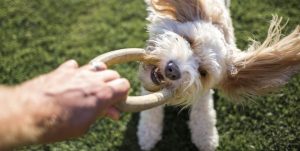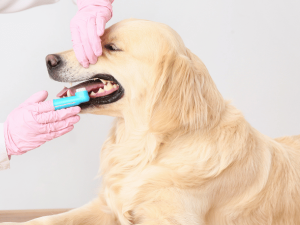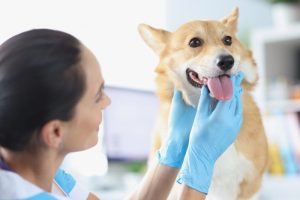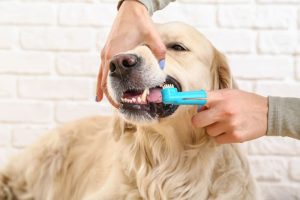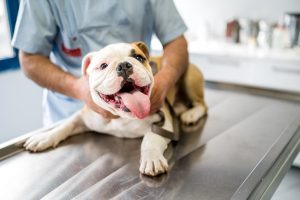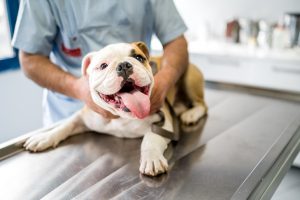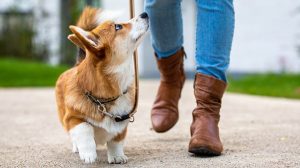Hey there, fellow dog lovers! Have you ever noticed your furry friend coughing and wondered what might be going on? Just like us, dogs can experience coughing for various reasons, and it’s essential to understand how to best support them during these times of discomfort. That’s where we come in! In this article, we’ll dive into the world of coughing in dogs, exploring the common causes, recognizing the signs, and most importantly, providing you with practical tips for caring for a coughing dog. So, grab a cozy spot with your pup by your side, and let’s embark on this journey together to ensure our furry companions stay happy and healthy!
Understanding Canine Coughing:
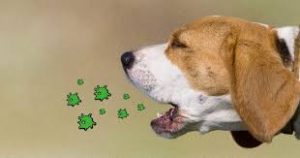
Dog Coughing can be a concerning symptom for pet owners, but it’s essential to understand that it can stem from various underlying causes. Here, we delve into the fundamentals of canine coughing to shed light on this common issue:
-
Common Causes of Coughing in Dogs:
- Respiratory Infections: Viral or bacterial infections affecting the respiratory tract can lead to coughing.
- Kennel Cough: Also known as infectious tracheobronchitis, kennel cough is a contagious respiratory condition commonly seen in dogs.
- Allergies: Environmental allergens or irritants can trigger coughing episodes in sensitive dogs.
- Heart Disease: Certain heart conditions, such as congestive heart failure, can manifest with coughing as a symptom.
- Tracheal Collapse: This condition involves the weakening of the tracheal cartilage, leading to coughing, especially during activity or excitement.
- Foreign Objects: Ingestion of foreign objects or irritants can cause irritation in the throat, resulting in coughing.
-
Types of Coughs in Dogs:
- Dry Cough: A dry, hacking cough often indicates irritation or inflammation in the upper respiratory tract.
- Wet or Productive Cough: Characterized by the presence of mucus or phlegm, indicating the body’s attempt to clear the airways.
- Honking or Goose-Honk Cough: Typically associated with tracheal issues such as tracheal collapse, resulting in a distinctive honking sound.
- Wheezing or Gagging Cough: Indicates difficulty breathing or potential airway obstruction, requiring immediate attention.
Understanding these different types of coughs and their potential causes is crucial for effectively addressing the underlying issue and providing appropriate care for our beloved canine companions.
Recognizing Signs of a Coughing Dog:
Caring for a coughing dog begins with recognizing the signs and symptoms associated with this common issue. Here, we provide insights into identifying when your furry friend may be experiencing coughing episodes:
-
Typical Symptoms of Coughing in Dogs:
- Persistent Coughing: Frequent or continuous coughing, which may vary in intensity and duration.
- Gagging or Retching: Some dogs may exhibit gagging or retching movements, especially if the cough is productive.
- Wheezing or Labored Breathing: Difficulty breathing or wheezing sounds accompanying coughing episodes.
- Lethargy or Weakness: Reduced energy levels or reluctance to engage in normal activities due to discomfort.
- Loss of Appetite: A decreased interest in food or treats, which may indicate underlying illness or discomfort.
- Restlessness or Irritability: Behavioral changes such as restlessness or increased agitation, particularly during coughing fits.
-
Guidance on Observing and Identifying Signs:
- Monitor Coughing Episodes: Keep track of when and how often your dog experiences coughing spells, noting any patterns or triggers.
- Assess Overall Health: Pay attention to other signs of illness or discomfort, such as changes in appetite, energy levels, or behavior.
- Check for Additional Symptoms: Look for accompanying symptoms such as nasal discharge, fever, or lethargy, which may provide clues to the underlying cause.
- Consult a Veterinarian: If you notice persistent or concerning symptoms, it’s essential to seek veterinary advice promptly to determine the cause of the cough and initiate appropriate treatment.
By being vigilant and attentive to your dog’s behavior and symptoms, you can help identify coughing episodes early and take necessary steps to address any underlying health issues affecting your canine companion.
Causes of Coughing in Dogs:
Understanding the underlying reasons behind a dog’s coughing episodes is crucial for providing appropriate care and treatment. Here, we delve into the diverse array of factors and conditions that can contribute to coughing in dogs:
-
Respiratory Infections:
- Bacterial or viral infections such as kennel cough (infectious tracheobronchitis) or canine influenza can cause inflammation and irritation of the respiratory tract, leading to coughing.
-
Allergies:
- Environmental allergens like pollen, dust mites, or mold, as well as food allergies, can trigger allergic reactions in dogs, resulting in coughing, sneezing, or itching.
-
Heart Conditions:
- Heart diseases such as congestive heart failure or heartworm infection can lead to fluid accumulation in the lungs or pulmonary hypertension, causing coughing as a secondary symptom.
-
Tracheal or Airway Issues:
- Tracheal collapse, bronchitis, or foreign objects lodged in the airway can obstruct airflow and induce coughing in dogs, especially during physical activity or excitement.
-
Heartworm Disease:
- Infestation with heartworms (Dirofilaria immitis) can lead to damage to the heart and lungs, resulting in coughing, exercise intolerance, and respiratory distress.
-
Pneumonia:
- Bacterial, fungal, or aspiration pneumonia can cause inflammation and infection of the lungs, leading to coughing, fever, and difficulty breathing.
-
Chronic Conditions:
- Chronic diseases such as bronchitis, asthma, or pulmonary fibrosis can cause ongoing respiratory issues and persistent coughing in affected dogs.
-
Environmental Factors:
- Exposure to smoke, pollutants, or chemical irritants in the environment can irritate the respiratory tract and trigger coughing episodes in dogs.
By identifying the specific cause or triggers of a dog’s coughing, veterinarians can develop targeted treatment plans to address the underlying condition and alleviate discomfort, ultimately improving the dog’s quality of life.
Seeking Veterinary Care:
When dealing with a coughing dog, it’s essential to prioritize their health and well-being by seeking prompt veterinary care. Here’s why consulting with a veterinarian is crucial and guidance on when to seek veterinary attention for a coughing dog:
-
Proper Diagnosis and Treatment:
- Veterinarians are trained to diagnose the underlying cause of a dog’s coughing through a comprehensive physical examination, diagnostic tests, and medical history review. This allows for accurate identification of the underlying condition and the development of an effective treatment plan.
-
Identification of Serious Conditions:
- Some causes of coughing in dogs, such as heart disease, pneumonia, or heartworm infection, can be potentially life-threatening if left untreated. A veterinarian can quickly assess the severity of the dog’s condition and provide timely intervention to prevent complications.
-
Guidance on Home Care:
- Veterinary professionals can offer guidance on appropriate home care measures to help alleviate a dog’s coughing symptoms and promote comfort during recovery. This may include recommendations for rest, hydration, environmental modifications, or medication administration.
-
Monitoring for Progress:
- Regular follow-up appointments with a veterinarian allow for ongoing monitoring of the dog’s progress and response to treatment. Adjustments to the treatment plan can be made as needed based on the dog’s clinical signs and diagnostic findings.
-
Prevention of Spread of Disease:
- In cases where a coughing dog is suspected of having a contagious respiratory infection, veterinary intervention is crucial to prevent the spread of the disease to other pets in the household or community.
Guidance on When to Seek Veterinary Care:
It’s essential to be vigilant and proactive when it comes to a coughing dog’s health. Pet owners should consider seeking veterinary care if their dog exhibits any of the following signs:
- Persistent or worsening coughing that lasts for more than a few days.
- Coughing accompanied by other concerning symptoms such as difficulty breathing, lethargy, loss of appetite, or fever.
- Coughing in young puppies, senior dogs, or dogs with pre-existing health conditions.
- Coughing that interferes with the dog’s ability to eat, drink, or sleep comfortably.
- Any sudden or severe changes in the dog’s overall condition or behavior.
By recognizing the importance of veterinary care and being proactive in seeking professional assistance, pet owners can ensure their coughing dogs receive the necessary attention and support for a speedy recovery.
Home Care for a Coughing Dog:
When caring for a coughing dog at home, pet owners can provide comfort and support to help alleviate their symptoms and promote recovery. Here are some practical tips for home care:
-
Create a Soothing Environment:
- Ensure that the dog has a quiet and comfortable space to rest and relax. Minimize exposure to loud noises, strong odors, or other environmental stressors that may exacerbate coughing episodes.
-
Maintain Optimal Humidity Levels:
- Use a humidifier or vaporizer to increase moisture levels in the air, especially during dry or cold weather. Moist air can help soothe the dog’s respiratory tract and ease coughing.
-
Encourage Rest and Relaxation:
- Encourage the dog to rest and avoid strenuous activities that may trigger coughing or exacerbate respiratory discomfort. Provide soft bedding and a cozy resting area where the dog can feel safe and secure.
-
Monitor Temperature and Hydration:
- Ensure that the dog remains adequately hydrated by providing fresh water at all times. Monitor the dog’s body temperature and avoid exposure to extreme heat or cold, which can worsen respiratory symptoms.
-
Nutritious Diet:
- Feed the dog a balanced and nutritious diet that supports overall health and immune function. Consider offering soft or easily digestible foods if the dog’s appetite is affected by coughing or respiratory issues.
-
Avoid Irritants and Allergens:
- Identify and eliminate potential triggers for coughing, such as cigarette smoke, dust, pollen, or strong chemical odors. Keep the dog away from areas where these irritants may be present to minimize exposure.
-
Regular Grooming:
- Keep the dog’s coat clean and well-groomed to prevent matting and reduce the accumulation of allergens or irritants. Regular brushing can also help remove loose fur and dander, minimizing potential triggers for coughing.
-
Follow Veterinary Recommendations:
- Adhere to any treatment recommendations or medication protocols prescribed by the veterinarian. Administer medications as directed and follow up with scheduled veterinary appointments for monitoring and assessment.
By implementing these home care tips and providing a supportive environment for their coughing dog, pet owners can help alleviate discomfort and promote a speedy recovery. However, if the dog’s symptoms persist or worsen despite home care measures, it’s essential to seek veterinary attention promptly for further evaluation and treatment.
Treatment Options:
Managing dog coughing typically involves a combination of medications, lifestyle adjustments, and other interventions prescribed by veterinarians. Here is an overview of common treatment options:

-
Medications:
- Veterinarians may prescribe various medications to alleviate coughing and address underlying causes. These may include:
- Cough suppressants: Medications that help reduce coughing episodes by suppressing the urge to cough.
- Bronchodilators: Drugs that help relax the airway muscles and improve airflow, particularly in cases of bronchitis or asthma.
- Antibiotics: Used to treat bacterial infections that may be causing respiratory symptoms.
- Antihistamines: Administered to dogs with allergies or allergic reactions that trigger coughing.
- Steroids: Anti-inflammatory drugs that may be prescribed to reduce inflammation and swelling in the airways.
- Veterinarians may prescribe various medications to alleviate coughing and address underlying causes. These may include:
-
Lifestyle Adjustments:
- Making changes to the dog’s environment and daily routine can help minimize coughing episodes and promote overall respiratory health. These adjustments may include:
- Avoiding exposure to environmental irritants such as smoke, dust, and pollen.
- Using a harness instead of a collar during walks to reduce pressure on the dog’s neck and airway.
- Keeping the dog indoors during periods of poor air quality or extreme weather conditions.
- Providing regular exercise to maintain healthy lung function and cardiovascular fitness.
- Making changes to the dog’s environment and daily routine can help minimize coughing episodes and promote overall respiratory health. These adjustments may include:
-
Dietary Modifications:
- In some cases, dietary changes may be recommended to address underlying issues contributing to coughing, such as allergies or food sensitivities. Veterinarians may recommend switching to hypoallergenic or limited-ingredient diets to identify and eliminate potential allergens.
-
Environmental Management:
- Pet owners can take steps to minimize environmental triggers for coughing, such as:
- Using air purifiers or filters to remove airborne allergens and pollutants from the indoor environment.
- Keeping the home clean and free of dust, mold, and other respiratory irritants.
- Avoiding exposure to cigarette smoke or other sources of indoor air pollution.
- Pet owners can take steps to minimize environmental triggers for coughing, such as:
-
Supplemental Therapies:
- Some dogs may benefit from supplemental therapies such as acupuncture, herbal remedies, or nebulization therapy to help manage coughing and improve respiratory function. These treatments should be administered under the guidance of a qualified veterinarian.
-
Monitoring and Follow-Up:
- It’s essential for pet owners to monitor their dog’s response to treatment and report any changes or concerns to the veterinarian. Follow-up appointments may be necessary to assess progress, adjust treatment protocols, or address any new symptoms that arise.
By implementing these treatment options in consultation with a veterinarian, pet owners can effectively manage coughing in their dogs and improve their overall quality of life. It’s essential to follow the veterinarian’s recommendations closely and seek prompt veterinary care if the dog’s symptoms persist or worsen despite treatment.
Prevention and Long-Term Management:
Preventing coughing episodes in dogs and managing respiratory health over the long term involves implementing strategies to minimize exposure to potential triggers and promote overall wellness. Here are some essential considerations:
-
Regular Veterinary Check-ups:
- Schedule routine veterinary examinations to monitor your dog’s overall health and address any potential respiratory concerns promptly. Veterinarians can assess your dog’s respiratory function, recommend preventive measures, and detect early signs of respiratory conditions before they escalate.
-
Vaccination and Parasite Control:
- Keep your dog up-to-date on vaccinations to prevent infectious diseases that can cause coughing, such as kennel cough (Bordetella) or canine influenza. Additionally, ensure your dog receives regular preventive treatments for parasites like heartworms, fleas, and ticks, which can exacerbate respiratory issues and compromise lung function.
-
Maintaining a Healthy Environment:
- Create a clean and hygienic living environment for your dog by regularly cleaning and ventilating indoor spaces, minimizing exposure to environmental pollutants, and using pet-safe cleaning products. Avoid smoking around your dog, and limit exposure to other respiratory irritants like aerosol sprays, air fresheners, and scented candles.
-
Balanced Diet and Nutrition:
- Provide your dog with a balanced and nutritious diet tailored to their age, breed, size, and health status. Opt for high-quality commercial dog food or a veterinarian-recommended homemade diet that meets your dog’s nutritional needs without triggering allergies or sensitivities. Adequate hydration is also essential for maintaining healthy respiratory function, so ensure your dog has access to clean, fresh water at all times.
-
Regular Exercise and Mental Stimulation:
- Encourage regular physical activity and mental stimulation to support your dog’s overall well-being and strengthen their respiratory and cardiovascular systems. Engage in daily walks, play sessions, and interactive games that promote exercise, socialization, and mental enrichment. However, be mindful of your dog’s exercise tolerance and avoid strenuous activities that may exacerbate respiratory issues.
-
Stress Management:
- Minimize stressors in your dog’s environment and provide a calm and predictable routine to reduce anxiety and promote relaxation. Stress can weaken the immune system and exacerbate respiratory conditions, so prioritize your dog’s emotional well-being by creating a safe and comfortable living space, offering positive reinforcement training, and providing opportunities for mental and emotional enrichment.
By incorporating these preventive measures and long-term management strategies into your dog’s care routine, you can help reduce the risk of coughing episodes and support their respiratory health and overall quality of life. However, if your dog experiences persistent or worsening respiratory symptoms despite preventive efforts, consult with a veterinarian for further evaluation and guidance tailored to your dog’s specific needs.






